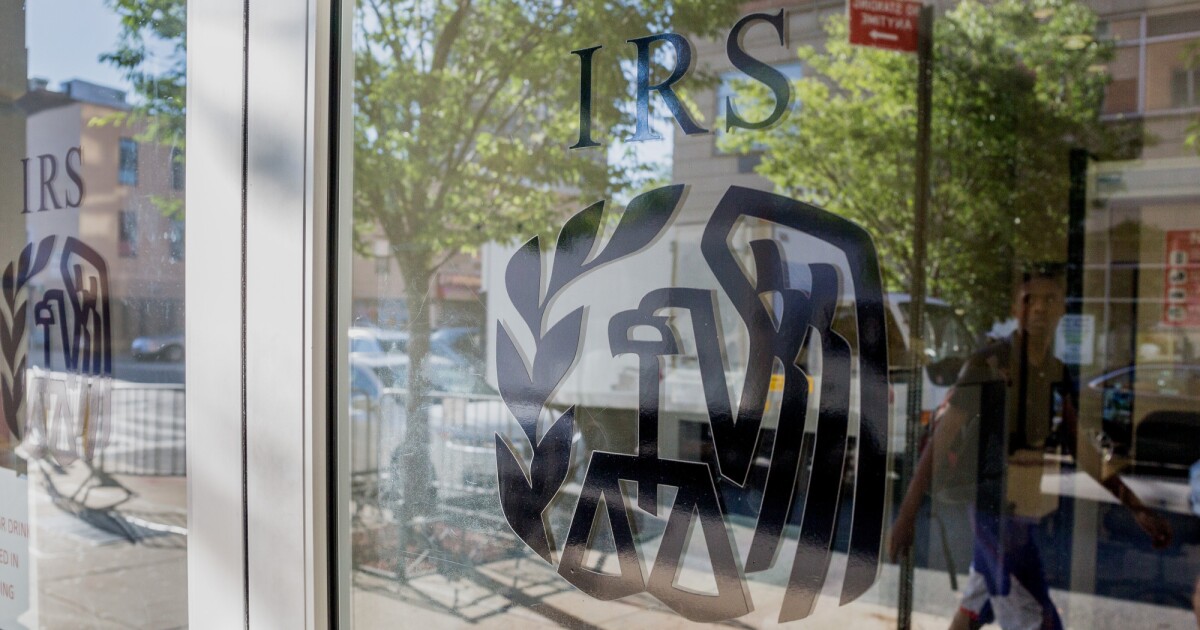Individuals and businesses in parts of Illinois affected by severe storms, tornadoes, straight-line winds and flooding that began on July 13 now have until next February to file various federal individual and business tax returns and make tax payments.
The Internal Revenue Service is offering relief to any area designated by the Federal Emergency Management Agenc. This now includes Cook, Fulton, Henry, St. Clair, Washington, Will and Winnebago Counties in Illinois.
Individuals and households that reside or have a business in any one of these localities qualify for tax relief. The same relief will be available to any other counties added later to the disaster area. The current list of eligible localities is always available on the Tax relief in disaster situations page on IRS.gov.
This relief postpones various tax filing and payment deadlines that occurred beginning on July 13, 2024, and ending on Feb. 3, 2025. Affected individuals and businesses will have until Feb. 3, 2025, to file returns and pay any taxes that were originally due during this period.
The Feb. 3 deadline will now apply to:
- Any individual, business or tax-exempt organization that has a valid extension to file their 2023 federal return. Payments on these returns are not eligible for the extra time because they were due last spring, before the storms.
- Quarterly estimated income tax payments normally due on Sept. 16, 2024, and Jan. 15, 2025.
- Quarterly payroll and excise tax returns normally due on July 31, Oct. 31, 2024, and Jan. 31, 2025.
Penalties for failing to make payroll and excise tax deposits due on or after July 13, 2024, and before July 29, 2024, will also be abated if the deposits were made by July 29, 2024.
Individuals and households that reside or have a business anywhere in the designated areas for this relief, which postpones various tax filing and payment deadlines that occurred from Sept. 10, 2024, through Feb. 3, 2025. Affected individuals and businesses will have until Feb. 3 to file returns and pay any taxes that were originally due during this period.
The Feb. 3, 2025, deadline will for example now apply to:
- Any individual, business or tax-exempt organization that has a valid extension to file their 2023 federal return. Payments on these returns are not eligible for the extra time because they were due last spring, before Francine.
- Quarterly estimated income tax payments normally due on Sept. 16, 2024, and Jan. 15, 2025.
- Quarterly payroll and excise tax returns normally due on Oct. 31, 2024, and Jan. 31, 2025.
In addition, penalties for failing to make payroll and excise tax deposits due on or after Sept. 10, 2024, and before Sept. 25, 2024, will be abated if the deposits are made by Sept. 25.
The IRS disaster assistance and emergency relief for individuals and businesses page has details on other returns, payments and tax-related actions qualifying for relief during the postponement period.
The agency automatically provides filing and penalty relief to any taxpayer with an address of record in the disaster area. If an affected taxpayer does not have an address in the area (because, for example, they moved to the area after filing their return), and they receive a late-filing or late-payment penalty notice from the IRS for the postponement period, they should call the number on the notice to have the penalty abated.
The IRS will work with any taxpayer who lives outside the disaster area but has records necessary to meet a deadline occurring during the postponement period in the affected area. Qualifying taxpayers who live outside the disaster area should call the agency at (866) 562-5227, including workers assisting the relief activities who are with a recognized government or philanthropic organization.
Tax preparers in the disaster area with clients who are outside the disaster area can use the bulk requests from practitioners for disaster relief option described on IRS.gov.
Individuals and businesses in a federally declared disaster area who suffered uninsured or unreimbursed disaster-related losses can choose to claim them on either the return for the year the loss occurred (in this instance, the 2024 return normally filed next year), or the return for the prior year (2023, filed this year).
Taxpayers have extra time — up to six months after the due date of the taxpayer’s federal income tax return for the disaster year (without regard to any extension of time to file) — to make the election. For individual taxpayers, this means Oct. 15, 2025. Write the FEMA declaration number, 4819-DR, on any return claiming a loss.


 Economics1 week ago
Economics1 week ago
 Economics1 week ago
Economics1 week ago
 Economics7 days ago
Economics7 days ago
 Finance1 week ago
Finance1 week ago
 Blog Post1 week ago
Blog Post1 week ago
 Economics1 week ago
Economics1 week ago
 Personal Finance7 days ago
Personal Finance7 days ago
 Economics1 week ago
Economics1 week ago












